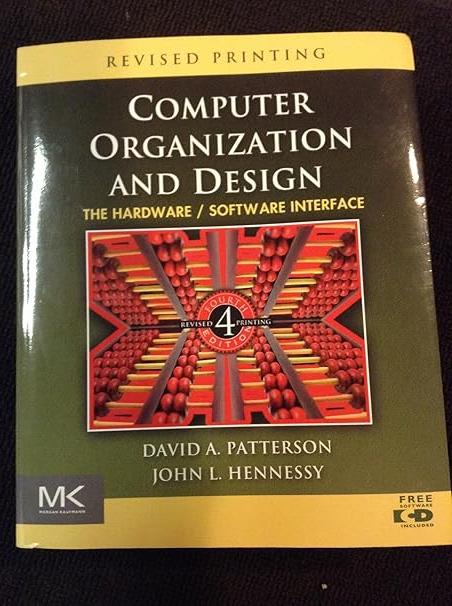Write an MIPS assembly language program to calculate the product of A and B, assuming they are
Question:
Write an MIPS assembly language program to calculate the product of A and B, assuming they are stored using the format described in 3.11.1. Now modify the program to calculate the sum assuming the format described in 3.11.3. Which format is easier for a programmer to deal with? How do they each compare to the IEEE 754 format? (Do not worry about sticky bits for this question.)
problem 3.11.1
Write down the binary bit pattern assuming a format similar to that employed by the DEC PDP-8 (the leftmost 12 bits are the exponent stored as a two’s complement number, and the rightmost 24 bits are the mantissa stored as a two’s complement number ). No hidden 1 is used. Comment on how the range and accuracy of this 36-bit pattern compares to the single and double precision IEEE 754 standards.
Problem 3.11.3
The Hewlett-Packard 2114, 2115, and 2116 used a format with the leftmost 16 bits being the mantissa stored in two’s complement format, followed by another 16-bit field which had the leftmost 8 bits as an extension of the mantissa (making the mantissa 24 bits long), and the rightmost 8 bits representing the exponent. However, in an interesting twist, the exponent was stored in sign-magnitude format with the sign bit on the far right! Write down the bit pattern assuming this format. No hidden 1 is used. Comment on how the range and accuracy of this 32-bit pattern compares to the single precision IEEE 754 standard.
Floating point multiplication is even more complicated and challenging than floating point addition, and both pale in comparison to floating point division. The following table shows pairs of decimal numbers.
Step by Step Answer:

Computer Organization And Design The Hardware Software Interface
ISBN: 9780123747501
4th Revised Edition
Authors: David A. Patterson, John L. Hennessy





